Physician and APP labor pool
It takes a village
At the start of the pandemic, a massive team effort helped stand up the physician and APP labor pool office in less than a week.
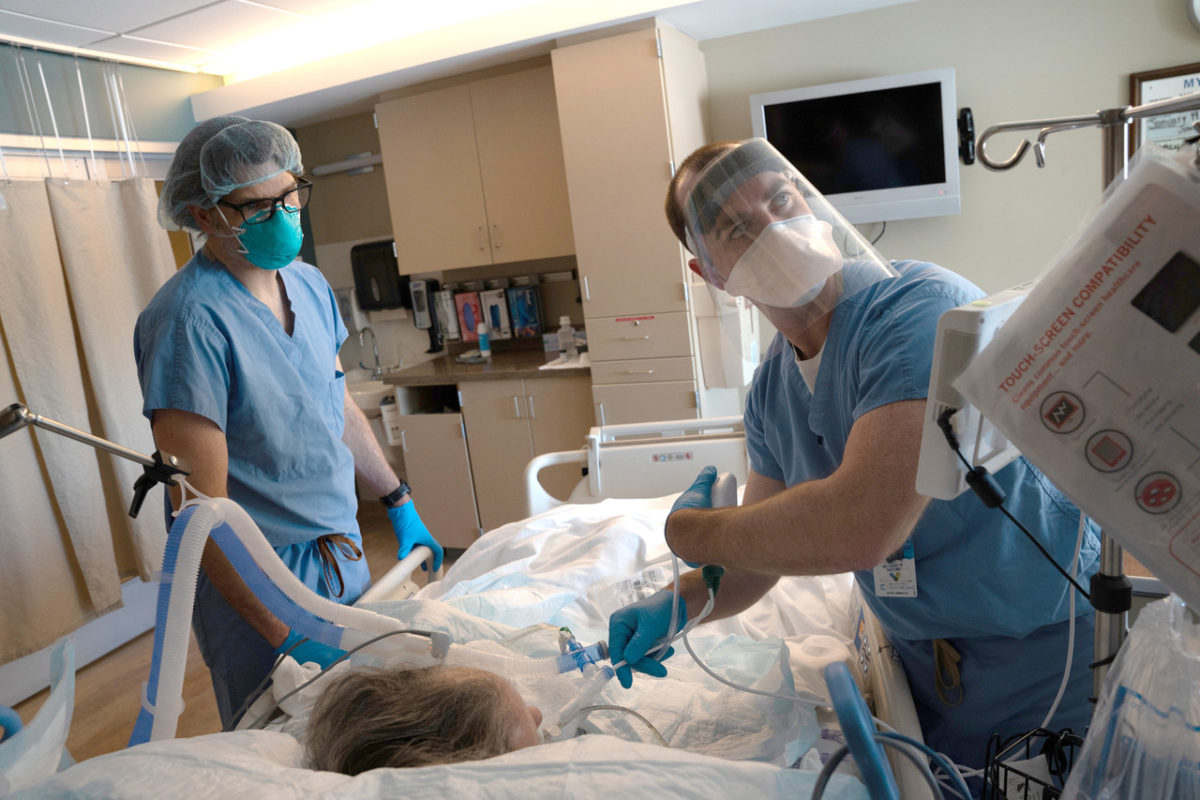
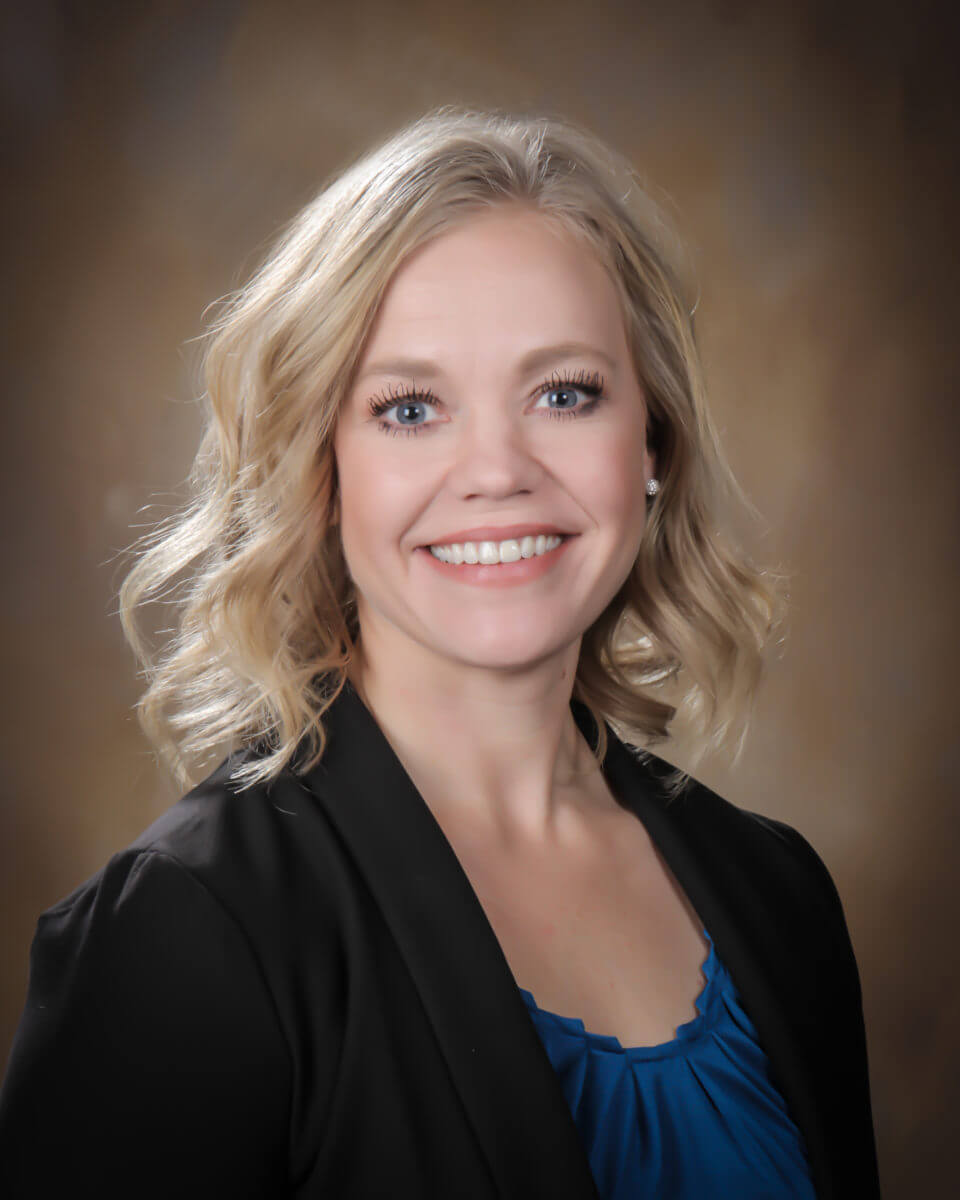
When Bobbie Bertram, APRN, APP Practice Director, looks back on the last couple years, she feels mixed emotions. “I’m doing better today,” she says with a smile. “Of course, when you see an uptick in the COVID numbers, it’s disappointing, but at the same time you feel more prepared now.”
One reason she feels more prepared is because of the organization’s establishment of the physician and APP labor pool, which early in the pandemic took a look at the people resources – capabilities and skill levels of providers – in order to redeploy staff to meet the needs of patients.
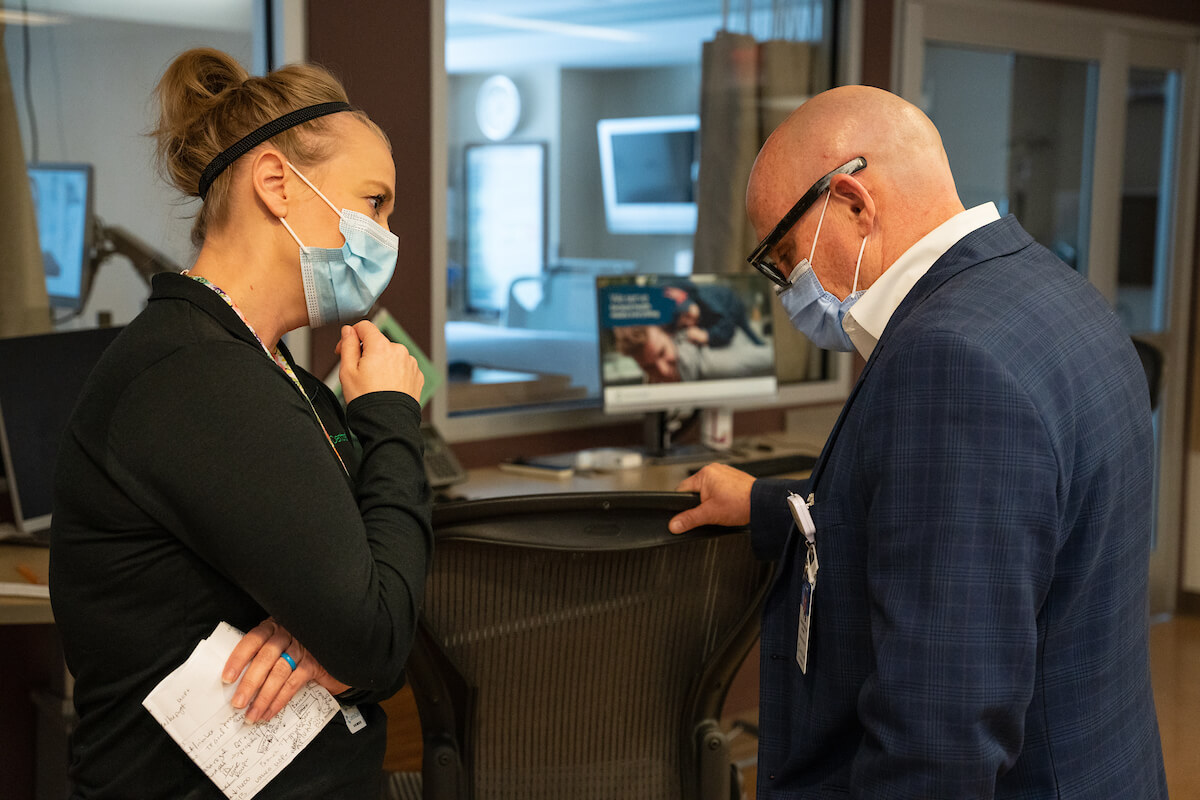
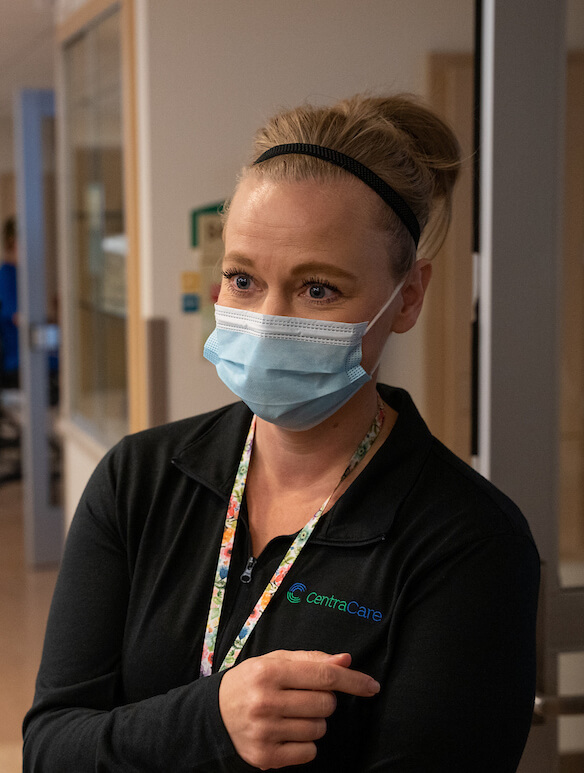
How it started
We were sitting in a room, talking about our clinical provider response to the pandemic and looking at what was happening in New York,” recalls Bertram. “The conversation was around the fact that we needed to figure something out, and I said, ‘That’s something I can do.’ I remember Dr. George Morris saying, ‘Okay, that’s yours, do whatever it takes.’ And that’s how that happened.”
While Bertram got it started, she’s quick to point out that it was a massive team effort. “I got to kick it off and be the face of it, but the work and the outcomes were because of a whole team of people, including our recruitment office, operational leaders, clinical section leaders, the APPs and physicians who got the information back to me, and most importantly, all our clinical providers who said, ‘How can I help?’”
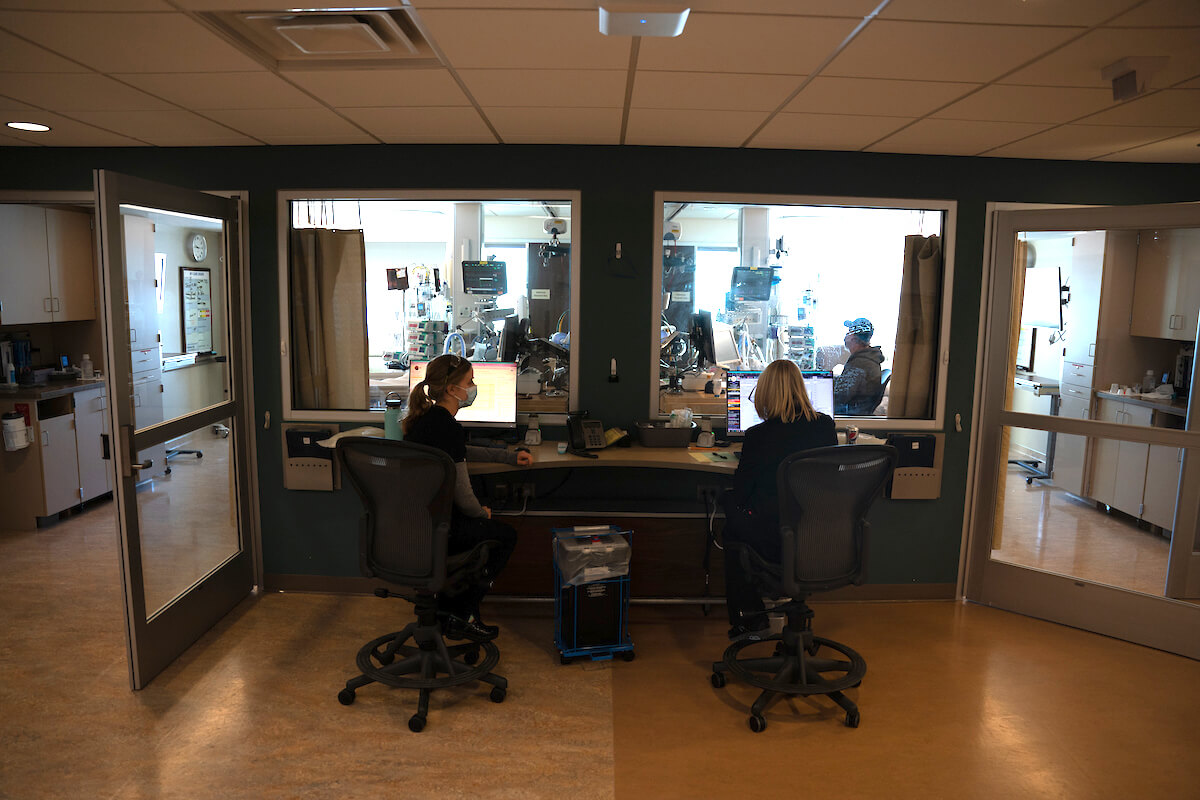

1 week, 800+ physicians
The first step was doing a skills inventory of more than 800 clinical providers. That information was then shared with the physician and APP labor pool office that was stood up in less than a week. “Our recruitment office really helped organize and look at the skill levels of all the individuals to place them in areas that matched their skill set.”
In many instances, APPs were called upon to work in capacities outside their typical clinical rotations or clinical areas, like David Buhl, PA, who rotated through the ICU a handful of times.
The hospitalists and intensivists are very smart and they’re great teachers.
David Buhl, PA, Urology
“I initially rounded with the hospitalists in the ICU,” he recalled. “Leading up to it was pretty darn intimidating and it feels a little bit like baptism by fire. But the hospitalists and intensivists were super great to work with, they’re very smart and they’re great teachers. They’re also easy to get along with and they made it a really positive experience.”
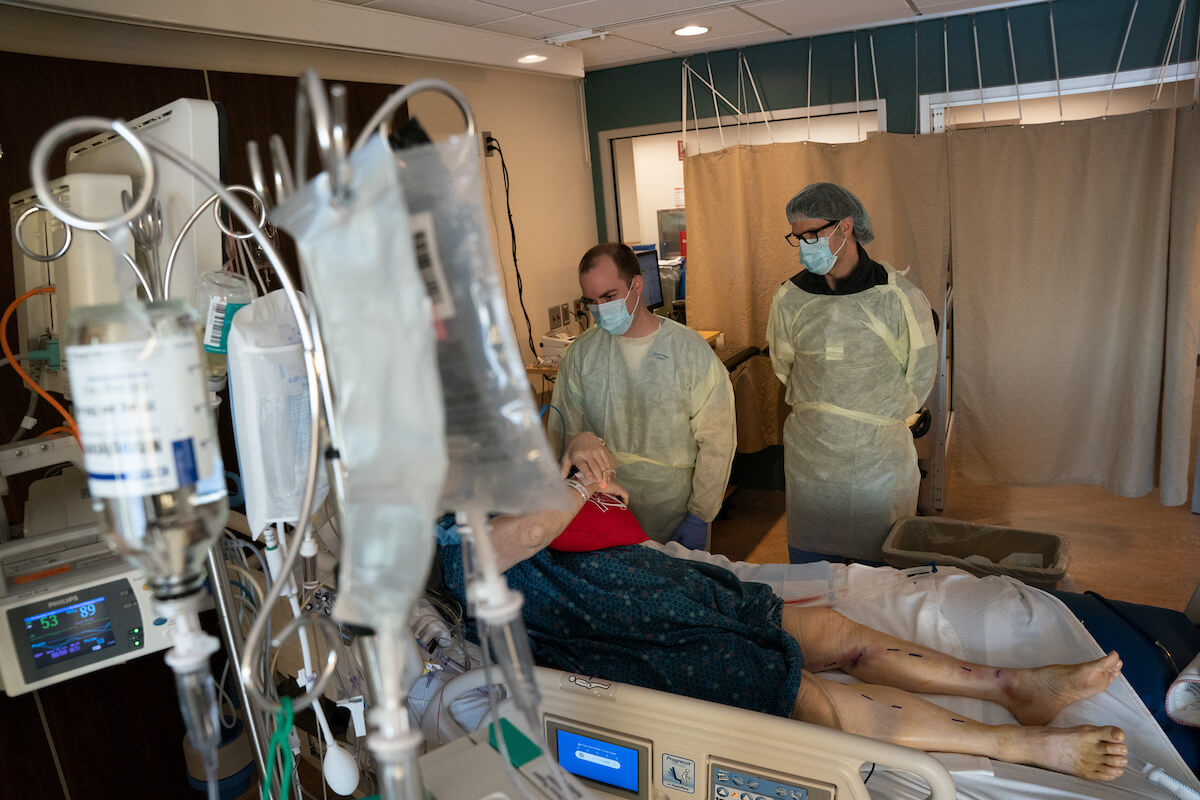
He was also impressed with the teamwork. “What really struck me about the team in the ICU is how they work together and keep a sense of humor,” he said. “You’re dealing with such heavy things from day to day, but they had a camaraderie from the physicians and nurses to the social workers and care coordinators. It was really special.”
Bertram also took rotations in the ICU, helping the intensivists when they needed additional clinical staff. “The team in the ICU was so welcoming and thankful,” she said. “The intensivists are amazing and so willing to teach. They taught me about vents and drips, pathophysiology, and about the different types of procedures. I learned so much.”

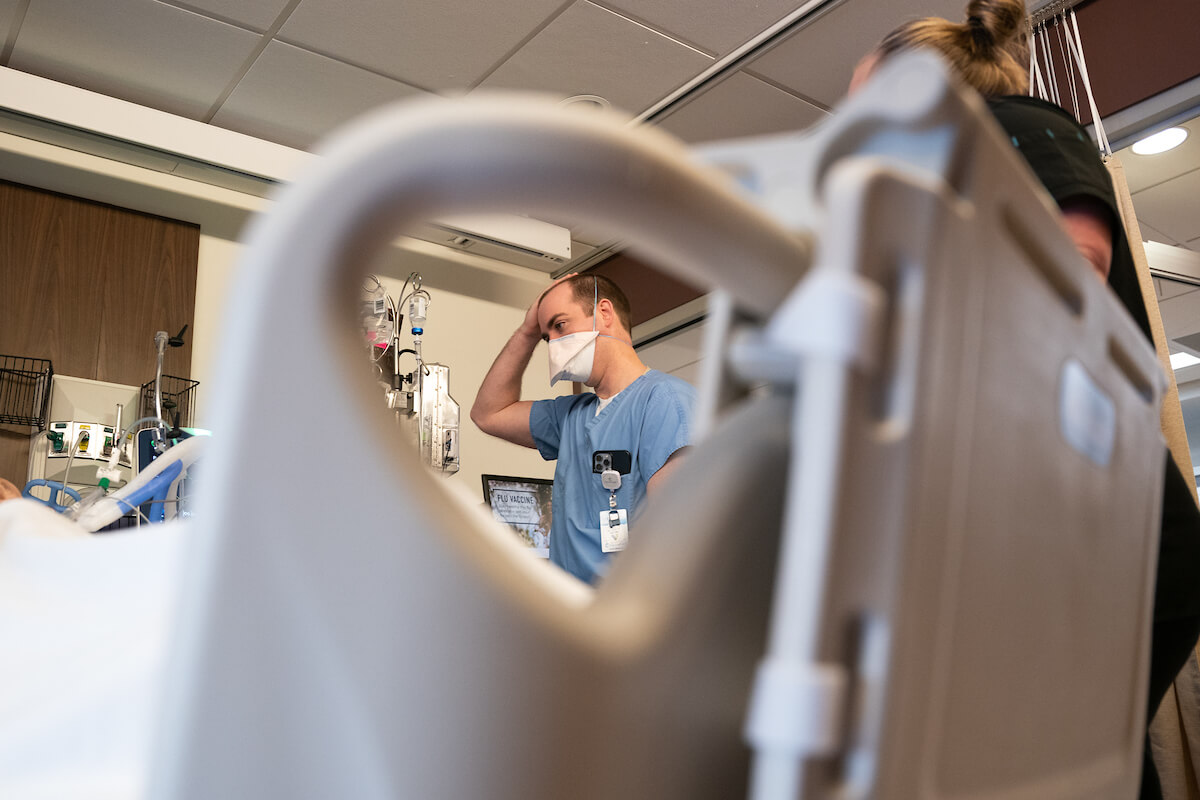
Gratitude and service
There were many aspects of this work that was gratifying for Bertram, and it was felt in the conversations she had with her colleagues who stepped up to help. “Every single person I had the opportunity to follow up with after their rotations shared a sense of gratitude and service. They were grateful for the opportunity to support a colleague and support our patients,” she said. “I wish people could feel what I experienced in these conversations, because it was inspiring.”
I think often about the people who were in it day in and day out – the nurses, intensivists, and respiratory therapists.
Bobbie Bertram, APRN, APP Practice Director
The hardest part of the experience for Bertram is thinking about her colleagues. “I think often about the people who were in it day in and day out – the nurses, intensivists, and respiratory therapists. I helped out for a few weeks at a time and got my tank evened out. But for the caregivers who did this continuously while being emotionally drained – I’m not sure they did. It’s important to honor the sacrifices – both emotionally and physically – of those who were in the middle of it all. We need to recognize it, and not forget that today or in the future.”
As Bertram looks ahead, she’s hopeful that the experiences of the past couple years will shape the future. “To move forward successfully, we need to learn from what we went through. It was a shared experience and I think it connected us a little bit deeper. It brought us together as a team and we are better than where we started.”





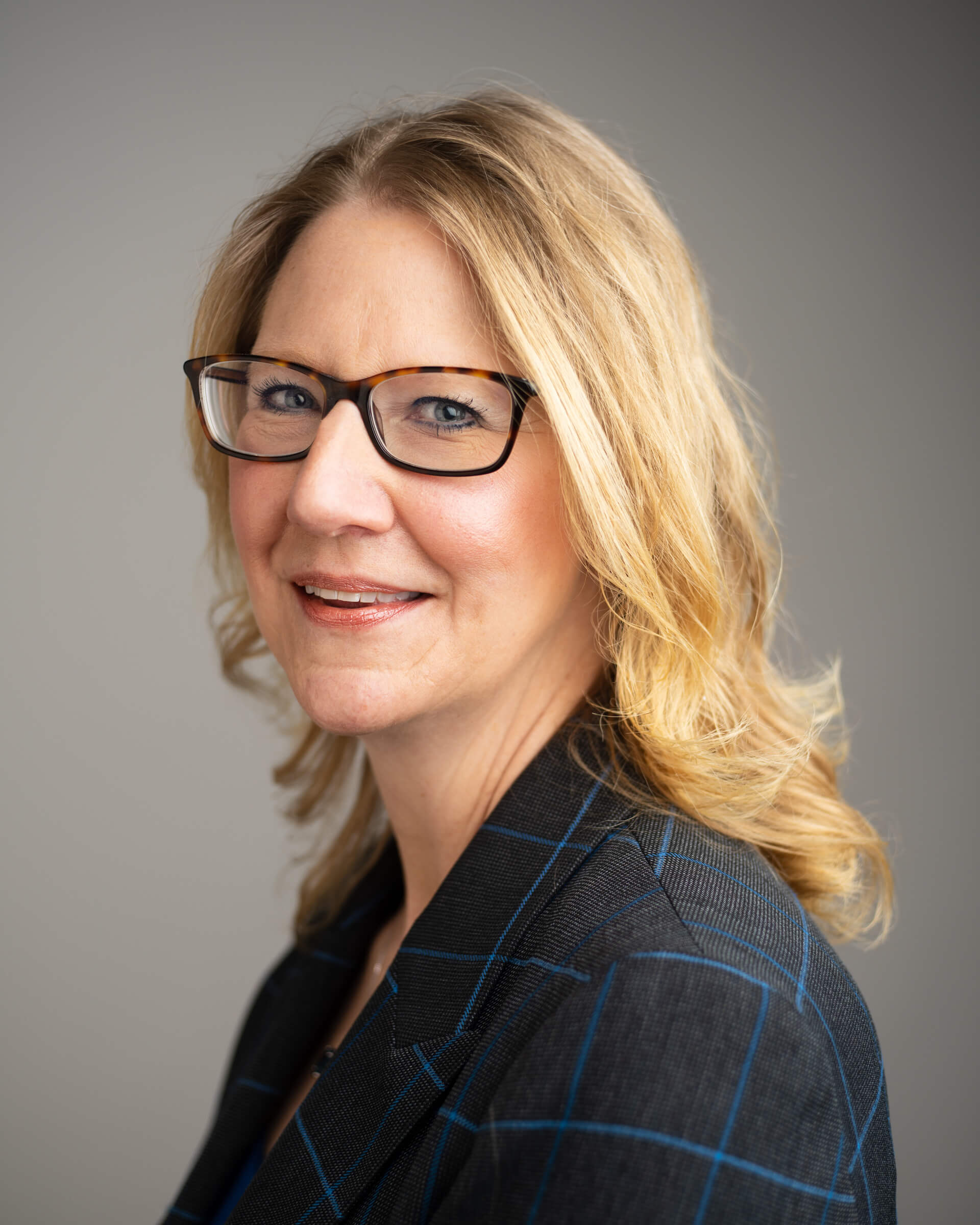
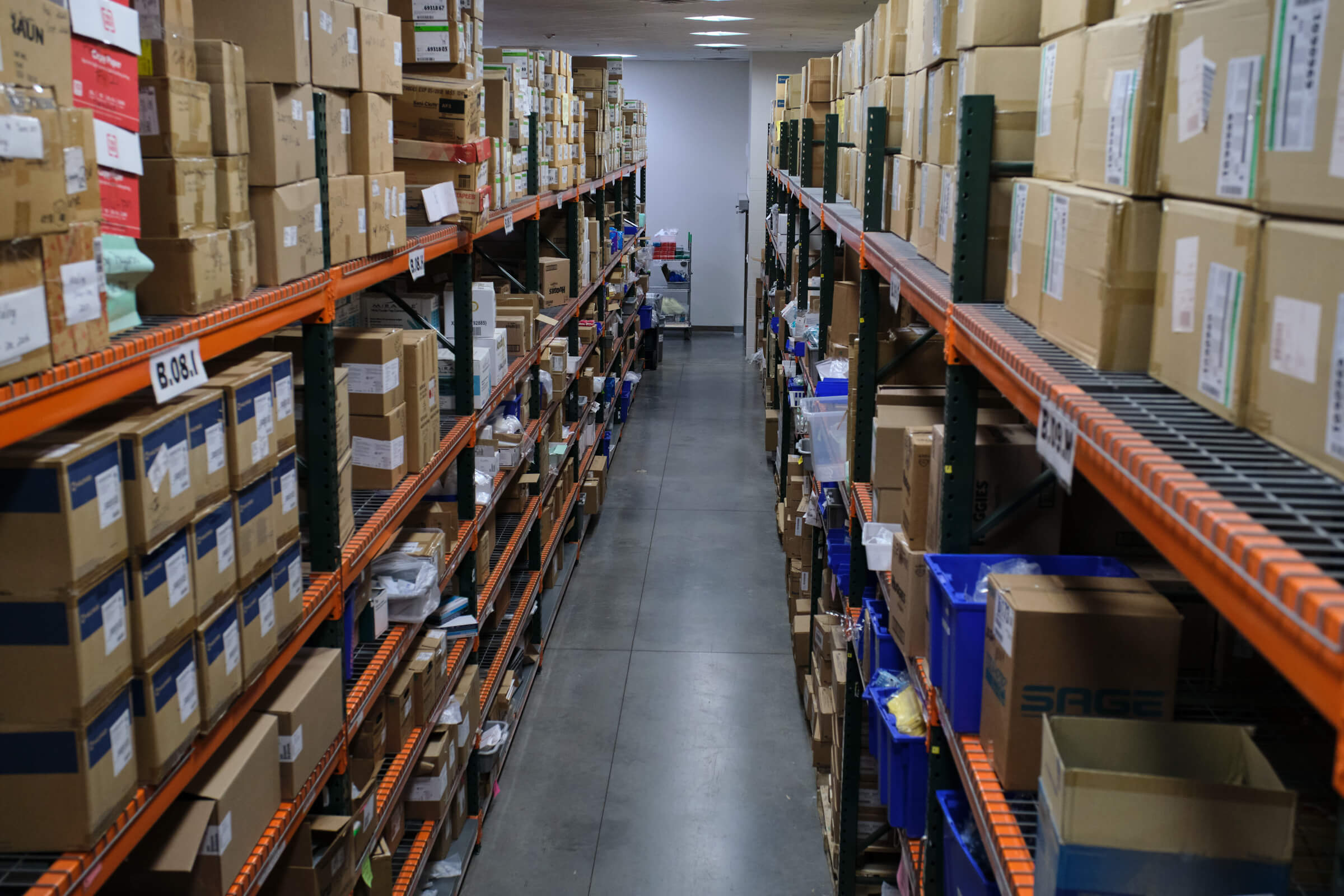


David – Not that I’m prejudiced or anything, but you described the ICU I’ve worked with perfectly…Teamwork, along with a little humor 🙂
thanks Bobbie. I am proud to know you!